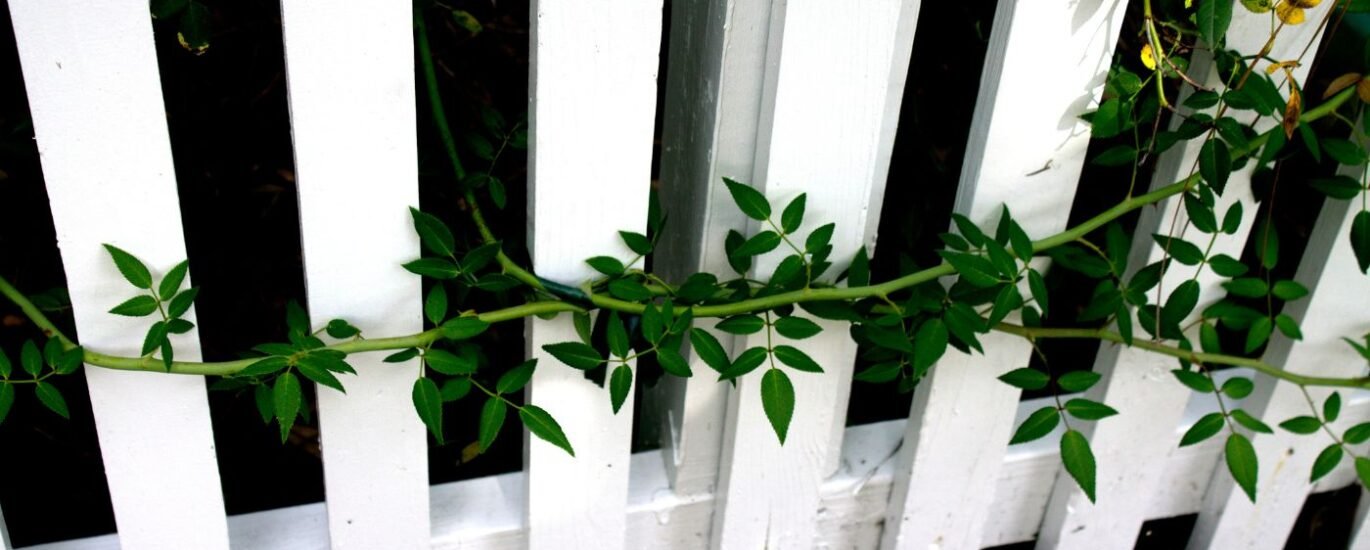There’s something undeniably beautiful about a lush vine-covered fence. Whether you’re aiming for more privacy, added shade, or simply a pop of natural color, vines can transform an ordinary fence into a stunning feature of your landscape. But not all vines—or fences—are created equal. If you’re not careful, the very plants you’re nurturing could cause long-term damage to your structure, especially if it’s made of wood.
If you’re planning to add climbing greenery to your fence, it’s important to understand what works, what doesn’t, and how to balance natural beauty with long-term durability. Let’s walk through the essential do’s and don’ts of growing vines on your fence—with expert insight from a fence contractor Kirkwood, MO and recommendations tailored to wood fence builders.
Why Grow Vines on Your Fence?
Vines aren’t just eye-catching—they serve several practical purposes:
-
Increased privacy without the need for taller fencing
-
Natural cooling from added shade
-
Reduced noise in busy neighborhoods
-
Improved curb appeal with seasonal blooms and lush greenery
-
Eco-friendly landscaping that supports pollinators
When selected and maintained properly, fence-friendly vines are a scalable, results-driven solution for homeowners who want both form and function in their outdoor space.
The Do’s of Growing Vines on Fences
✅ Do Choose the Right Type of Vine
Not all vines are safe for fences. Some are aggressive and can cause structural damage, while others are better suited for long-term compatibility.
Good options for wood fences include:
-
Clematis – A lightweight, flowering vine that climbs via tendrils.
-
Honeysuckle (Lonicera) – Fragrant, colorful, and attractive to hummingbirds.
-
Coral vine – A fast grower with vibrant pink blooms that’s relatively gentle on structures.
-
Trumpet vine – Beautiful and bold but requires regular pruning to keep under control.
A well-experienced wood fence builder can offer recommendations for vines that complement your fence style and strength.
✅ Do Consider the Weight of the Vine
Even the strongest fences have limits. A mature vine can become heavy and pull on the fence’s framework. Choose vines with lightweight growth patterns unless your fence is reinforced to handle additional load.
If your fence is older or built with lighter materials, you may need to support the vine with a separate trellis or wire system installed alongside the fence.
✅ Do Prune Regularly
Overgrowth is one of the most common reasons vines cause damage. Regular trimming not only keeps the vine visually pleasing but also:
-
Reduces moisture buildup
-
Prevents insect nests
-
Keeps weight and tension off the fence
A trusted fence contractor in Kirkwood, MO will tell you that a little upkeep goes a long way in protecting your fencing investment.
✅ Do Monitor Moisture and Rot
Vines hold moisture, which can soften wood over time. If your fence isn’t properly sealed, it becomes vulnerable to mold, mildew, and rot.
To combat this:
-
Apply a high-performance weather-resistant sealant every 1–2 years
-
Ensure there’s airflow between the vine and the fence
-
Avoid planting vines too close to the base where soil stays damp
The Don’ts of Growing Vines on Fences
❌ Don’t Use Invasive or Aggressive Vines
While fast-growing vines can offer quick coverage, some species are too aggressive and can overwhelm your fence—and even your home.
Avoid:
-
English Ivy – Its tendrils dig into wood and hold moisture, causing long-term damage
-
Wisteria – Beautiful but extremely heavy and known to destroy wooden structures
-
Virginia Creeper – Vigorous spreader that clings tightly and can damage finishes
A well-informed wood fence builder can explain why certain species should only be planted with reinforced trellising—not directly on your fence.
❌ Don’t Skip Inspection and Maintenance
Vines can hide early signs of fence trouble. Without regular inspection, you might miss:
-
Warped or cracked wood
-
Rusted hardware
-
Loose boards
-
Insect infestations
Schedule a visual check every season. Better yet, ask your local fence contractor in Kirkwood, MO to inspect the fence structure annually if it’s supporting significant plant growth.
❌ Don’t Attach Vines Directly to the Fence (In Some Cases)
Some vines use tendrils or suckers to attach to surfaces. Over time, these can cause paint to peel, wood to splinter, or fasteners to loosen.
To avoid direct damage:
-
Use a freestanding trellis near the fence
-
Install a wire or mesh grid above the fence line
-
Train the vine to climb along a non-invasive structure
This gives you the green coverage you want without compromising the structural integrity of your fence.
Real-World Example: Wood Fence and Honeysuckle in Kirkwood, MO
A homeowner in Kirkwood wanted more privacy and color in their backyard without building a taller fence. They contacted a local wood fence builder to assess whether their 6-foot cedar fence could support vines.
The contractor recommended planting honeysuckle along a simple wire trellis anchored just above the fence. The honeysuckle bloomed quickly, added fragrance and shade, and stayed lightweight enough not to stress the wood panels.
With seasonal pruning and regular sealing, the fence has remained solid for over five years—and the yard is more vibrant than ever.
When to Call a Fence Contractor
If your fence is older, damaged, or wasn’t built with vine coverage in mind, it’s best to consult a reliable fence contractor in Kirkwood, MO before planting. They can help you determine:
-
Whether your fence needs reinforcement
-
Which materials are best for moisture resistance
-
If vinyl, aluminum, or composite fencing would better suit your goals
-
How to set up trellises or supports to protect your investment
A proven, results-driven contractor will work with you to create a scalable, long-lasting solution that blends beauty with functionality.
Final Thoughts
Vines and fences can coexist beautifully—if you plan properly. By choosing the right plants, supporting them correctly, and committing to regular maintenance, you can enhance your outdoor space without sacrificing your fence’s lifespan.
Whether you’re looking to dress up a new build or revive an older structure, a well-experienced wood fence builder can help ensure your project grows in the right direction—literally.
Before planting, consider a professional fence inspection or consultation. With a trusted fence contractor in Kirkwood, MO, you’ll be on the right path to a thriving, eye-catching fence line that lasts for years to come.






